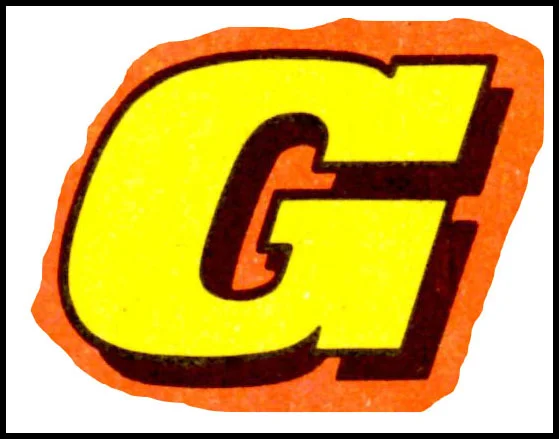Introducing ... Oor Pals in the North
Fantastic news, pals! From today we become two blogs for the price of one, as the fun-stars, heroines and heroes of DC Thomson-based website Oor Pals in the North join forces with IPC-based Great News for all Readers!
For every Buster there’s a Beano, for every Tammy a Bunty, for every Battle a Warlord, for every Whoopee! a Sparky, for every Cheeky a Plug, for every Misty a Spellbound and for every Action a Bullet. Who were the stars of the DC Thomson comics universe in the 1970s and 1980s? What was the history of some of these memorable names and titles, and who were their creators? Oor Pals in the North has the answers!
Well, I hope it will come to do so anyway. OPITN is, of course, a new strand for the GNFAR blog and not a once proud website in its own right cruelly merged into a rival, counting the weeks until its name is reduced in size and then cut entirely from the title banner. OPITN posts will appear alongside the GNFAR posts and the two strands will have their own Twitter and Facebook accounts for updates away from the site.
The plan here is to try to build an archive of memories of DC Thomson’s wonderful range of comics from the 1970s and 1980s in the same style that I have employed with IPC titles up to now. I may not limit the blog to IPC and DC Thomson – there are one or two titles from other publishers which may crop up from time to time, but OPITN is essentially about DC Thomson. I’m doing this partly because I think I ought to – the blog is otherwise a very one-sided representation of the British comics scene during those halcyon days – and also because I feel rather ignorant of DC Thomson’s publications so this will be, I hope, a process of discovery for me.
DC Thomson introduced me to comics as my first title was The Topper, from, I think, around 1975. My dad had it on order, and I believe it was a bit of a family tradition for him (my father’s side of the family were always into the comics, and visits to my grandparents usually meant a chance to sift through annuals of The Topper, Eagle, The Perishers, Andy Capp, Tintin and Asterix). I chose to move over to Whizzer and Chips around 1976 or 1977, and since then I operated almost exclusively in an IPC bubble, bar an occasional Beezer Summer Special, or a big roll of old Beanos and Dandys that an uncle once bought me from a second-hand shop.
Despite the parallels of certain titles listed above, the universes of DC Thomson and IPC seem to me very different places, and as I have started, over the last few months, to collect the former, I do have a sense of exploring a new country and learning a new language. Each house has its own look, of course, characterised by a strong range of artists who (with a few notable exceptions) tended to work for only one or the other publisher. But there’s a difference in culture too. There’s a noticeable Scots tone to many of DC Thomson’s humour comics – or I imagine there is, anyway: I find myself ‘hearing’ the characters speak in a Scots accent as I read the speech bubbles. And I’ve always felt that there’s a stricter adherence to style and format in the design and production of DC Thomson comics, while the IPC range had a more bohemian, even anarchic, feel. I’ve felt that that’s a positive, and part of what I love about IPC, but I can see that DC Thomson’s approach is just as laudable. There’s a great confidence in the consistency of its cover styles, formats and the line-up of its contents over the years, borne of a knowledge that they have formulae that work and which build on many decades of successful comic publishing (through not only The Beano, The Dandy, Bunty, The Wizard and so on, but through its newspaper output such as the Sunday Post). With Beano still publishing today, regular annuals for Beano, The Dandy, Oor Wullie and The Broons, and characters such as Desperate Dan and Dennis the Menace undisputedly icons of British popular culture (the wonderful ‘outrage’ generated a couple of days ago by a great piece of Beano marketing relating to Dennis – and for the truth of the matter it’s worth checking out the well-measured responses from Kev F. Sutherland and Lew Stringer – is indicative of just how important the character is perceived to be in the public consciousness), it’s hard to argue against DC Thomson as anything other than masters of the comics medium.
So I look forward to discovering and rediscovering what they had on offer in those two decades of my youth. My sincere thanks to Martin Lindsay of the licensing department of DC Thomson Media for permission to post scans from the comics here and on Twitter and Facebook. I have been asked to make it clear that DC Thomson do not grant permission for any of the scans used on this blog to be posted elsewhere, so please respect their copyright and abide by that.
Finally, I would like to stress again that I am not an expert on the history of DC Thomson comics. This is very much a journey of learning for me and I would appreciate any (kindly worded) comments which help me to get it right – whether correcting any errors I make in identifying creators, or filling in the gaps in my knowledge. I know that there are many fans and students of comics out there who have greater knowledge than me and I’d value your help in building an accurate record of these precious memories.




